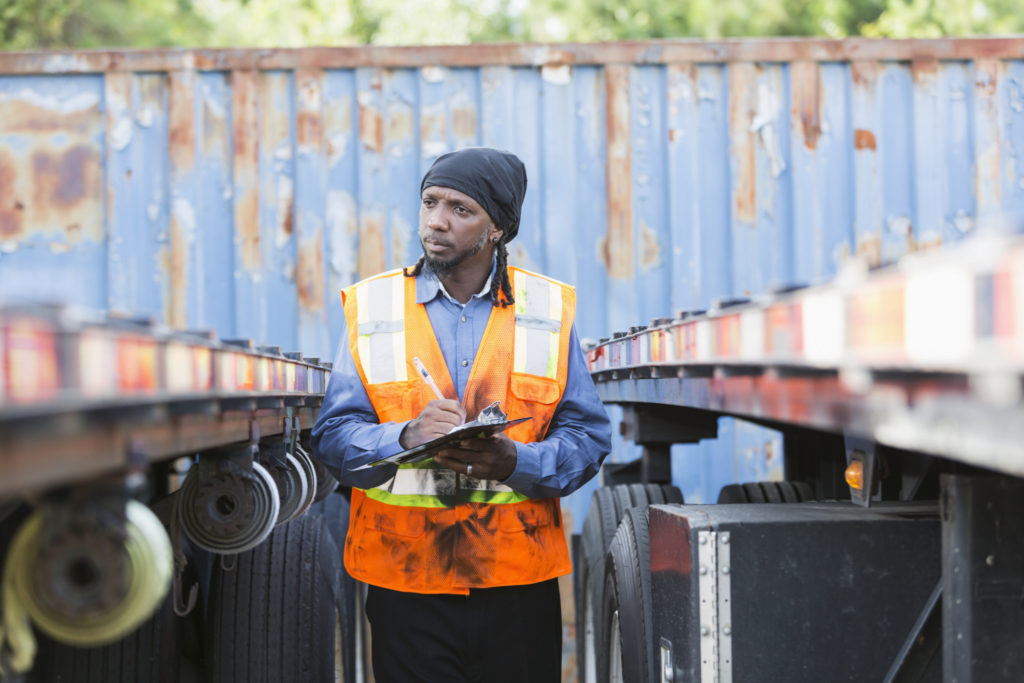Protect your trailers from corrosion

It’s too bad that corrosion isn’t a line item on a budget. Maybe it’s best that it isn’t. The figure would shock you.
It’s one thing to track replacement costs for brake parts and wheels that are prematurely removed from service, but many of your electronics-related problems like emissions faults, ABS faults and lighting are probably corrosion-related, too.
Corrosion has always been a concern, but it has worsened over the past seven or eight years, with the introduction of more corrosive road de-icing chemicals, namely magnesium chloride brine solutions. These chemicals are often mixed with a binding agent such as corn syrup or beet juice to keep the material from flowing off the road. It also adheres better to vehicles.
“You can no longer just brush or wash the stuff off like you could with road salt residue,” says Tom Ramsden, vice-president — sales and marketing at Manac Trailers. “That stuff is here to stay, and its corrosive properties make it very difficult for trailer manufactures to build trailers that are completely resistant to corrosion.”
Ramsden says aluminum is a partial solution, but extensive use of that material can drive up costs, and the road chemicals will eventually damage aluminum as well. He says fleets are now looking seriously at galvanized trailer components such as coupler-plates, crossmembers, bogey frames, and landing gear to resist corrosion.
“We have had galvanized door frames for 20 years now,” he says. “That’s probably where it all started, but we’re seeing customers now asking for things like galvanized bottom rails after using aluminum for the past 20 years.”
Protect your circuits
The other problem with magnesium chloride, aside from the fact that it’s a liquid that flows and then sticks to whatever it comes into contact with, is that it’s more conductive than sodium.
“The magnesium is attracted to the electricity and the copper, so it spreads faster,” says Gerry Mead, executive director of innovation at Phillips Industries. “Industry simply has to do a better job of keeping that material out of the wiring, and that means using better connectors properly, and never puncturing the wiring when doing a circuit test.”
While the cost and frustration associated with corrosion of metal components is significant, it pales in comparison to the grief that accompanies electrical problems.
“OEMs have created very sophisticated circuits that also happen to be very sensitive to changes in voltage, current or resistance … aka corrosion,” notes Trent Siemens, director of maintenance at Paul’s Hauling. “We as an industry have not done a good enough job understanding the intricacies of circuit maintenance, diagnosis or repair. Corrosion in wiring can result in some very large diagnostic and repair costs, intermittent and frustrating circuit failures, frequent breakdowns, premature component failures and everything else.”
Getting to the heart of corrosion issues takes some effort. It’s one thing to keep throwing money at the problem, buying replacement parts, but there may be more cost-effective solutions available.
Zane McCarthy, business development manager at Link Mfg, suggests fleets would be able to combat corrosion if they studied their own corrosion issues. At least they would understand what parts are failing and why, and could then take steps to solve the problems rather than just replacing failed parts.
“It’s a tricky argument to make,” he says. “Every fleet will have different issues, depending on their exposure. Hiring an engineer to study a couple of brand-new trailers over their service life would give then a good picture of what’s going wrong. For some fleets the cost of corrosion might be just a rounding error and they won’t care. For others, it’s a real issue.”
The problem comes in proving the cost of the fix. He says it not like buying an aero add-on where you can almost instantly see the difference in fuel cost after installing the device. Corrosion happens over time. It’s really annoying to pull brake linings after just a year in service, but is the fix any more cost-effective?
Have your say
This is a moderated forum. Comments will no longer be published unless they are accompanied by a first and last name and a verifiable email address. (Today's Trucking will not publish or share the email address.) Profane language and content deemed to be libelous, racist, or threatening in nature will not be published under any circumstances.
I am surprised this hasn’t been discovered earlier and allowed companies to make repairs last or be better than they have been.
I worked on deep sea going ships before becoming a long haul ruck driver and as far as corrosion onthe ships being in salt water 99% of the time these ships had ZINK plate install all over the haul of the ship so the rust would attack the zinc first and doing minor damage to the hull of that ship. So why not having something similar for road equipment???